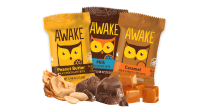We often hear safety and health linked in some way, and I sometimes wonder which comes first and whether one is more important than the other. If we aren’t in a safe environment, can we say we have our health? If we have our health, are we necessarily safe?
We know nursing is one of the most dangerous professions. Needlestick injuries, workplace violence, back injuries, and infectious diseases are but a few of the risks nurses encounter. Injuries are a major reason nurses leave bedside nursing or leave the profession altogether.
Still, I’ve heard others say that “healthcare workers don’t care about themselves,” reflecting the criticism that healthcare workers (including nurses) lack the perception of risk in the workplace. Is it because we place the patient ahead of ourselves that we give this impression? Of course, we do care about our patients, but we need to take care of ourselves so we can be there for them. So at what point do nursing and health and safety intersect?
In ANA’s 2001 health and safety survey, almost 90% of respondents acknowledged that health and safety concerns influence decisions about the kind of nursing work they perform and their continued practice in the field of nursing. Nearly half the nurses surveyed (48%) said they contracted illnesses or their illnesses had been made worse at work; at the same time, more than three quarters (76.7%) refused to miss more than 2 days of work. Similar findings emerged in 2007 and 2008 surveys.
In the current healthcare environment, we are experiencing health and safety challenges. We are in the midst of a pandemic influenza—novel H1N1. Some of the issues we hear about include vaccine shortages, a shortage of some sizes of safety needles, and shortages and improper use of N95 respirators. So how do we keep ourselves safe at work? To start with a simple example, nurses need to get seasonal vaccinations and take a previously unvaccinated healthcare worker with them. This simple buddy system could easily double our vaccination rates.
Safety needles are another important part of workplace safety that ANA has worked hard to get in place through the Needlestick Safety and Prevention Act, which was signed into law by Congress on November 6, 2000, and took effect in April 2001. The act modified the Occupational Safety and Health Administration’s (OSHA) 1992 Bloodborne Pathogen Standard by requiring implementation of engineering controls, including safer medical devices, such as safety engineered needles. Still, we know nurses do not always use or demand availability of these vital safety devices. I urge you to do so in your workplace, as they can save your life.
Once again, during this pandemic, we have had much discussion about use of the National Institute of Occupational Safety and Health’s certified filtering N95 respirator. Nurses need to know what an N95 respirator is, how it works, how to do a fit check, and how to use it properly in order to receive the full benefit of respiratory protection.
Here is what is most important: We must be vigilant in our call for proper protection. On October 14, 2009, the Centers for Disease Control and Prevention issued “Interim Guidance on Infection Control Measures for 2009 H1N1 Influenza in Healthcare Settings, Including Protection of Healthcare Personnel.” This document offered guidance about respiratory protection that included the use of N95 respirators, but ANA was disappointed to see that in taking into account current and anticipated shortages of N95 respirators, the document included discussion on the use of surgical masks when a facility must go on “prioritized respirator use.” In response, ANA sent letters to President Obama requesting that the government uphold commitment to the use of N95 respirators for protection.
Nurses can, and do, contract illnesses on the job. These include potentially fatal illnesses such as HIV, hepatitis B, and MRSA. Many of you may know nurses who’ve contracted a fatal illness through their job activities. The ANA Code of Ethics for Nurses states that nurses have the same duty to protect themselves as they do to protect others; further, nurses have a “responsibility to preserve integrity and safety.” Nurses need to know what protections are available for use in the workplace, advocate for them, know how to use them, and utilize available protective equipment to help keep themselves safe. Nursing is a dangerous profession in many aspects, but we have been empowered through our Code, through OSHA regulations, and through other mechanisms to be safe in the workplace.
My message to you is simple: Be informed, knowledgeable, and consistent in your own safety so you can not only be there for the patients, but also go home safe and healthy at the end of the day.
Rebecca M. Patton, MSN, RN, CNOR
President, American Nurses Association

















